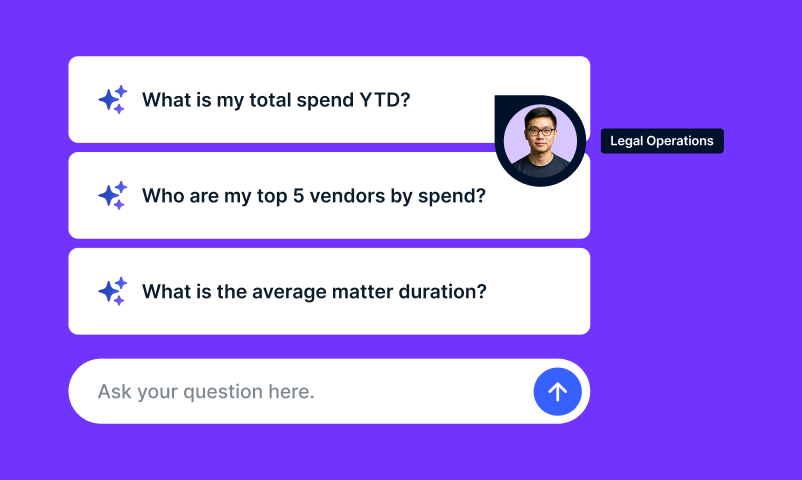Technology is an enabler for businesses and practitioners who wish to differentiate, grow, and succeed. Here is a comprehensive blueprint of the most innovative and essential solutions Legal requires to evolve into a true business partner, impactful revenue generator, and corporate leader — for today, tomorrow, and years to come.
Today, the world seems to move at the speed of light. Chatbots respond instantaneously to our online queries. True teleportation may not exist yet, but more than 15 million people are shuttled by rideshare companies daily. And somewhere between our first sip of coffee and setting our cell phone alarm for the next morning, over 2.5 quintillion bytes of data are created every single day.
The last chapter of the multinational study* Enterprise Legal Reputation (ELR) Report highlights the remarkable potential for legal operations to be a change agent driving business results with the assistance of technology. While, on average, three in four (77%) legal departments have integrated some level of artificial intelligence (AI) into their day-to-day operations, nearly half admit their department is averse to change, citing budget issues (48%), perceived lack of tech competency (31%), and lack of time for learning new systems (25%) as barriers to tech adoption.
But digital technology is reinventing the way we live, play, and work — and businesses that invest in state-of-the-art tech will remain several steps ahead.
Embedding tech in Legal’s DNA
Fortunately, legal tech investment is at a record high: although none of us has a crystal ball to predict how the current macroeconomic market will affect corporate decision-making, two in three (67%) professionals do see tech budgets increasing.
Investing, however, is only the first step. The true cornerstone to modernized legal operations is ensuring tools are adopted. According to the ELR report, less than three in 10 (28%) respondents describe themselves as early adopters by nature, while another six in 10 (62%) classify as middle adopters.
In many legal departments, though, things simply “get in the way.” But inefficiency can damage both a legal department’s brand image and hold back the enterprise. The message is clear: embrace next-stage tech or get left behind.
The “legal team of tomorrow” tool kit
Here are the four areas of technology integral to the success of forward-thinking legal departments.
1. Enterprise Legal Management (ELM)
A pioneering digital embodiment of the adage “work smarter, not harder,” the latest ELM solutions have transformed from systems of record to systems of engagement, encouraging true collaboration, operational transparency, and enterprise connection between Legal, its internal clients, and external stakeholders. ELM manages matters, e-billing, spend, and analytics, providing a single source of truth to capture every transaction, project, and matter. By extracting insights, developing metrics, and exposing trends that evaluate performance, ELM establishes benchmarks and streamlines workflows – yet less than half (48%) of ELR respondents currently utilize e-billing and other spend optimization solutions.
2. Contract Lifecycle Management (CLM)
Contracts are at the core of revenue generation – and one of the biggest time-sucks for legal professionals, with two in five (40%) spending half of every workday, week, and quarter managing routine agreement work. But the latest CLM solutions offer self-service portals that can automate contract review and administer the data required to identify revenue recognition and acceleration opportunities. This enhanced visibility jumpstarts efficiency, reducing the length of the typical sales cycle by 24%, skyrocketing legal spend savings by 50%, and giving Legal up to 30% of its time back to focus on developing business acumen, delivering client advice, and working toward meaningful change.
3. Data Governance & Cybersecurity
To become a corporate material influencer, Legal must think and act strategically — and doing so requires data. Data has emerged as the most instrumental decision-making tool, whether it involves tracking staffing needs, optimizing outside counsel spend, or driving vendor diversity, equity, and inclusion (DE&I) efforts. Having visual analytics dashboards provides reporting fundamentals for initiating data-driven negotiations, rate benchmarking, and forecasting future projects and budgets as cost-efficiently and effectively as possible. Further, as data pools expand for corporations, the security scope and threat landscape will broaden — providing an opportunity for Legal to show greater impact as guardian of the enterprise.
4. Artificial Intelligence (AI)
Imperative for speed and efficiency, artificial intelligence (AI) is not a single tool — it is a wide-ranging continuum of technological solutions and applications that can accelerate legal operations, virtualize legal expertise, and automate and augment business processes. AI can apply semantic analysis to find patterns in contracts, provide task recommendations, suggest revisions for standardized agreements like NDAs, and consult the company playbook for MSAs and SOWs, all while flagging any potential issues. AI-enabled invoice review can justify line items and enforce billing guidelines, and AI-assisted research can complete work in record time while elevating accuracy and precision.
Legal’s eye on the horizon
While it’s true that it has never been Legal’s nature to be cutting-edge — not when the department is one established on being “by the book” and upholding precedents — there is no denying the legal tech revolution is here. With it comes a golden opportunity for Legal to evolve its role as a business protector and create significant impact when it comes to cost and operational efficiency, material growth, and collaborative cultural change.
Technology is a catalyst for evolution. By seizing the innovative solutions available for legal operations, Legal can change the way it touches business in every realm — from revenue acquisition and EBITDA to competitive differentiation — and not only lead the evolution, but be the future.
*Read the ELR Report to learn more about how legal professionals view their relationships with internal clients in comparison to the image enterprise employees have of their legal departments and how Legal can evolve to prove material impact and improve efficiencies across the business.




